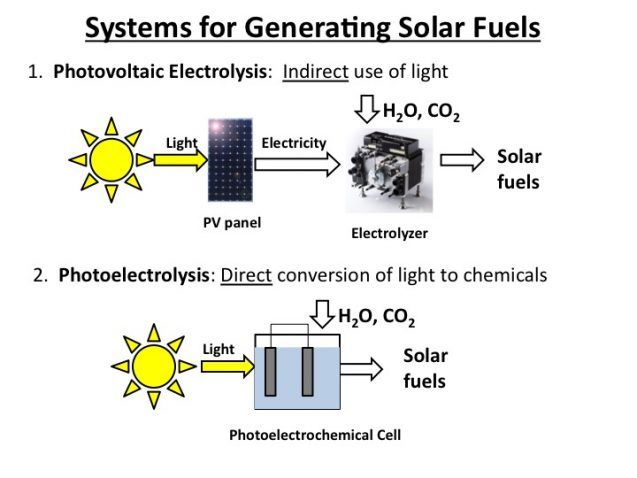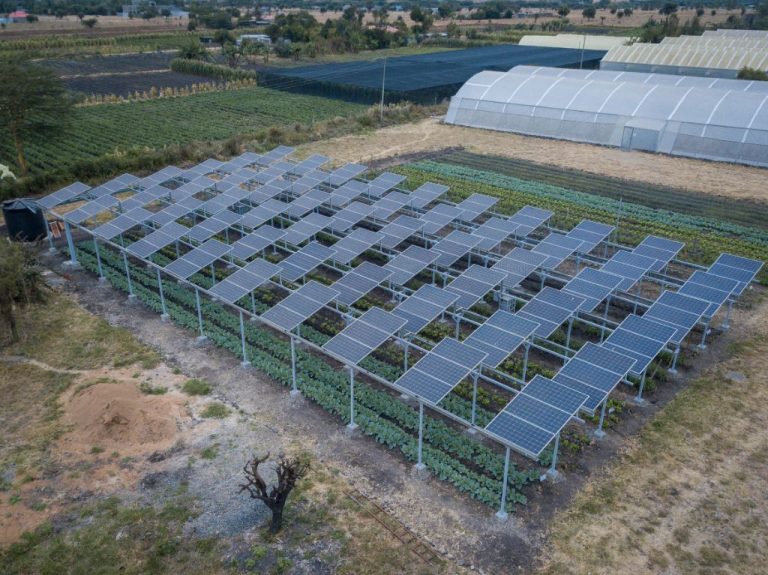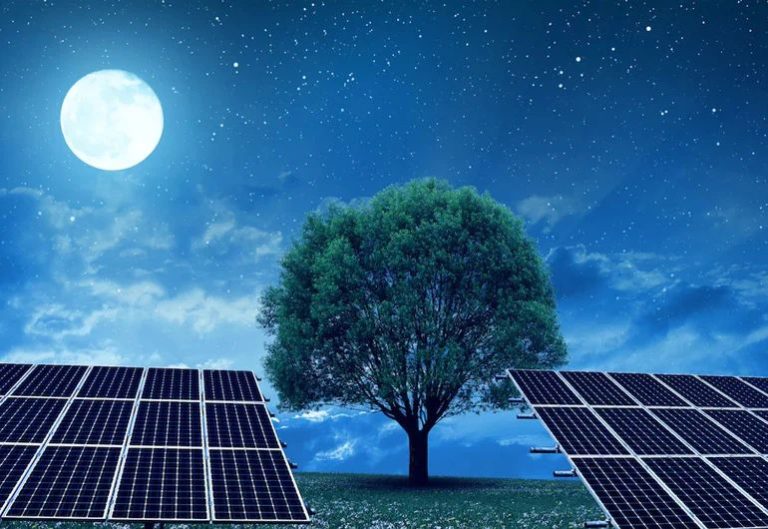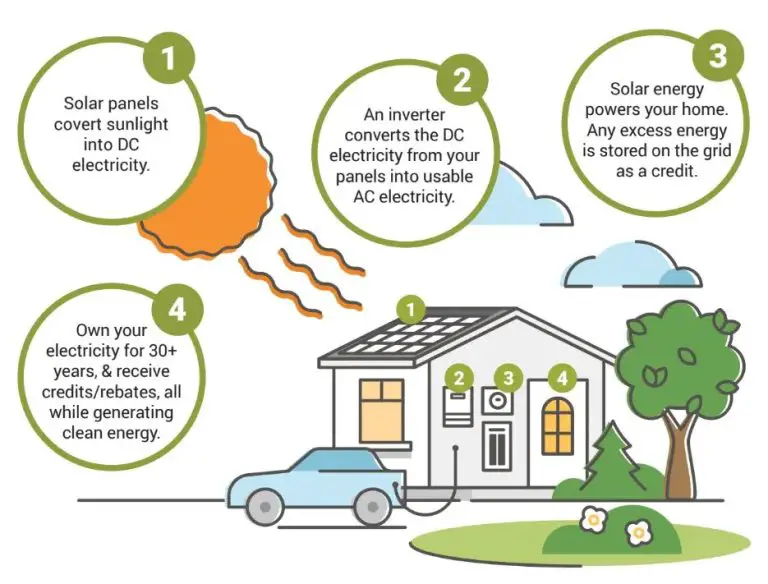Is Solar Power Considered A Natural Resource?
What is Solar Power?
Solar power is the conversion of energy from sunlight into electricity. It works through the photovoltaic effect, where solar cells containing materials like silicon absorb photons from sunlight and release electrons, generating an electric current. This electric current is captured and turned into usable electricity that can power homes, businesses, and the electric grid.
Solar panels are composed of many solar cells and are the main technology used to harness solar power. As sunlight hits the solar panels, the absorbed photons cause electrons in the solar cells to break free, enabling a flow of electricity. This electricity is then fed through inverters which convert the DC current into usable AC electricity. Solar power systems can be installed on rooftops, ground-mounted, or integrated into building materials to capture the sun’s energy.
Solar power is considered a renewable energy since it relies on the virtually limitless power of the sun. It produces power without any fossil fuel consumption or emissions, offering a sustainable energy solution. The modular nature of solar panels also allows solar power systems to be highly scalable and installed in many contexts, from small home systems to large utility-scale solar farms. Overall, solar power leverages photovoltaic technology to cleanly and renewably convert sunlight into electric power.
What are Natural Resources?
Natural resources are materials or substances that occur in nature and can be used for economic gain. They include both renewable resources, which can regenerate over time, and nonrenewable resources, which do not replenish once depleted. Some examples of natural resources include:
- Fossil fuels like oil, natural gas, and coal – Nonrenewable
- Minerals such as iron, copper, and aluminum ores – Nonrenewable
- Water – Renewable
- Air – Renewable
- Solar energy – Renewable
- Wind – Renewable
- Geothermal energy – Renewable
- Biomass from plants and animals – Renewable
Natural resources provide raw materials and energy that drive economic development and support human civilization. Their availability and use have shaped history, geopolitics, and energy policy.
Is Solar Power Derived from Nature?
The original source of solar power is sunlight from the sun. The sun, an immense ball of burning gas at the center of our solar system, provides the fuel for solar power technologies through the photons emitted. So in that sense, solar power starts from a natural process and a natural celestial body.

The question then becomes whether the sun itself qualifies as ‘nature’. The sun formed over 4.5 billion years ago and has been shining ever since through natural nuclear fusion processes. While human technology is required to collect and convert sunlight into usable electricity, the sun’s emissions themselves are an inherent natural phenomenon that long predates human intervention. Its immense energy output drives natural systems here on Earth. So most perspectives would consider the sun and its emissions as part of ‘nature’, even if technology is required to harness its energy.
Is Human Involvement Relevant?
While solar power ultimately originates from the sun, some argue that the technology used to harness it makes solar energy more of a technological creation rather than a natural resource. Solar panels and photovoltaic cells require an industrial process to manufacture. Significant research, innovation and infrastructure are also needed to generate electricity from the sun.
However, the same could be said of many natural resources. Petroleum requires extensive drilling, pipelines, refineries and transportation networks to become usable as fuel. Metals are extracted through large-scale mining operations. Water often needs reservoirs, dams, aqueducts or treatment facilities before we can utilize it. So human involvement does not necessarily preclude something from being considered a natural resource.
The key criteria for a natural resource is that it originates from nature, not whether it requires some human ingenuity to harness. Solar energy emanates from the sun independent of human activity. We simply employ technology to capture and convert it into a usable form. So while solar power relies on some man-made infrastructure, the energy itself arises naturally.
Perspectives on Solar Power as a Natural Resource
There are reasonable arguments on both sides of the debate about whether solar power should be considered a natural resource. Here are some of the main perspectives:
Those who argue solar power is a natural resource point out that it derives 100% from the sun, which is clearly a natural source of energy. The sun radiates energy in the form of electromagnetic waves, which we are able to capture and convert into usable electricity through solar photovoltaic panels. Since the original fuel source is completely natural, many contend that solar power itself should be classified as a natural resource.
On the other side, some argue that while the sun’s energy is natural, the process of capturing and converting that energy into usable electricity requires substantial human involvement and manufactured infrastructure like solar panels, inverters, batteries, etc. They believe this level of human intervention disqualifies solar power from being labeled a truly natural resource.
There are good-faith debates around the extent to which human involvement affects the “naturalness” of a resource. But in general, solar power is widely considered one of the most environmentally-friendly energy resources, given its renewable nature and low environmental impact compared to alternatives like fossil fuels.
Solar Power and Renewability
One of the defining features of solar power is that it relies on an unlimited, renewable resource—the sun. The amount of solar energy that reaches the Earth’s surface every hour is greater than the amount of energy used by all human activities in an entire year. Unlike fossil fuels such as oil, gas and coal, which are finite resources that will eventually be depleted, the sun’s energy will continue shining indefinitely.
Solar energy is considered renewable because the supply of sunlight is virtually limitless. After the initial energy investment to manufacture and install solar panels, the fuel source is free. This provides energy independence and insulation from future fuel shortages and price hikes. Fossil fuels, on the other hand, face exhaustion and require ongoing mining/drilling operations with associated environmental impacts and costs.
Solar power generation also does not directly produce greenhouse gas emissions like the burning of fossil fuels. Widespread use of solar energy could significantly reduce the carbon emissions causing climate change. Solar photovoltaics and solar heating are two of the most rapidly growing renewable energy sources today due to these sustainability advantages over nonrenewable fossil fuels.
Environmental Impact
Solar power is often regarded as a clean and environmentally-friendly energy source. Unlike fossil fuels, solar panels do not emit greenhouse gases or other pollutants that contribute to climate change and environmental degradation. The process of generating electricity from solar energy does not produce air or water pollution. This makes solar a more sustainable option compared to coal, oil, and natural gas power plants that release large quantities of carbon dioxide into the atmosphere. According to the EPA, the amount of carbon dioxide emitted per kilowatt-hour of electricity generated from the sun is 97% less than from coal plants.
In addition, solar power helps conserve finite natural resources. While fossil fuels rely on the continued extraction and burning of coal, gas, and oil reserves, solar energy is derived from an infinite resource – the sun. Widespread adoption of solar power can reduce reliance on non-renewable energy sources that are being depleted at alarming rates. The development of solar farms also has less of an ecological impact compared to mining and drilling for fossil fuel extraction.
However, solar power does have some negative environmental impacts that should be considered. The manufacturing of solar panels involves toxic materials like cadmium and lead that can contaminate the environment if not properly disposed of. Large utility-scale solar farms can also disrupt natural habitats and ecosystems if not sited appropriately. But on the whole, the environmental benefits of solar power far outweigh the costs when compared to conventional energy generation.
Economic considerations
The economic viability of solar power depends significantly on government subsidies and incentives in many markets. Solar panels and installation can involve high upfront costs for consumers, so measures like tax credits, rebates, and net metering programs that allow selling excess electricity back to the grid can help make solar power more financially attractive.
The cost of solar energy has dropped dramatically over the past decade, to the point that it is now competitive with conventional energy sources in some markets. However, those cost declines have been assisted by government support. Pulling back subsidies and incentives could impact the competitiveness of solar energy in the future.
At a macro level, increased adoption of renewable energy sources like solar can reduce dependence on imported fossil fuels and provide energy security benefits. But continuously evaluating the right level of public support based on solar technology costs and grid integration challenges is an important economic consideration for policymakers.
Future Outlook
The future is very bright for solar power. Solar is projected to continue its rapid growth for decades to come as costs continue to fall and solar technology improves. According to the International Energy Agency (IEA), solar power could generate up to 16% of the world’s electricity by 2050. This is a huge increase from solar’s 2% share of global electricity generation today.
Several key trends will drive growth in solar power:
- Continued cost declines – The cost of solar panels and installation continues to decrease. This makes solar power more affordable and attractive to utilize.
- Improving technology – Solar cell efficiency continues to improve. New solar cell materials and manufacturing processes will enable panels to generate even more electricity.
- Energy storage – Battery storage technology is also advancing rapidly. This allows solar power to be stored for use when the sun isn’t shining.
- Supportive policies – Many governments are enacting policies to encourage solar power adoption such as tax credits, renewable energy mandates, and streamlined permitting.
With these ongoing innovations, solar power will keep becoming more versatile, efficient and cost-competitive. This will enable it to play an increasingly major role in powering the planet far into the future.
Conclusion
In summary, there are compelling arguments on both sides of the debate about whether solar power should be classified as a natural resource. On one hand, solar energy originates from the sun, which is a natural source, and the process of converting sunlight into usable energy relies on natural materials like silicon. Additionally, solar power is renewable and does not deplete finite resources. These factors suggest solar power aligns with the definition of a natural resource.
However, generating solar electricity requires man-made technologies like photovoltaic panels. The human role in harvesting solar energy and converting it to electricity muddles the distinction between what is truly natural vs man-made. There are also concerns around solar energy’s variability and substantial land use requirements.
Overall, while solar power is derived from a natural source – the sun – and is renewable, the level of human involvement and industrial processes required tip the balance away from solar energy being considered a true natural resource. The human role in capturing and converting solar energy pushes it more toward the realm of man-made energy. However, solar power does utilize some key positive characteristics of natural resources, namely renewability. So while solar energy does not fully qualify as a natural resource, it shares some important attributes with natural resources that benefit the environment.







